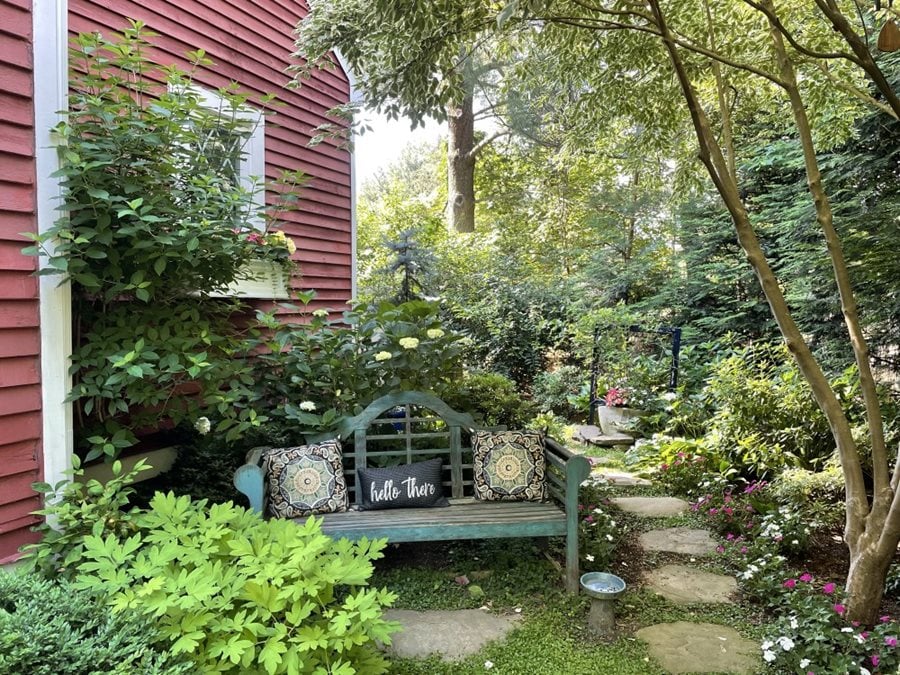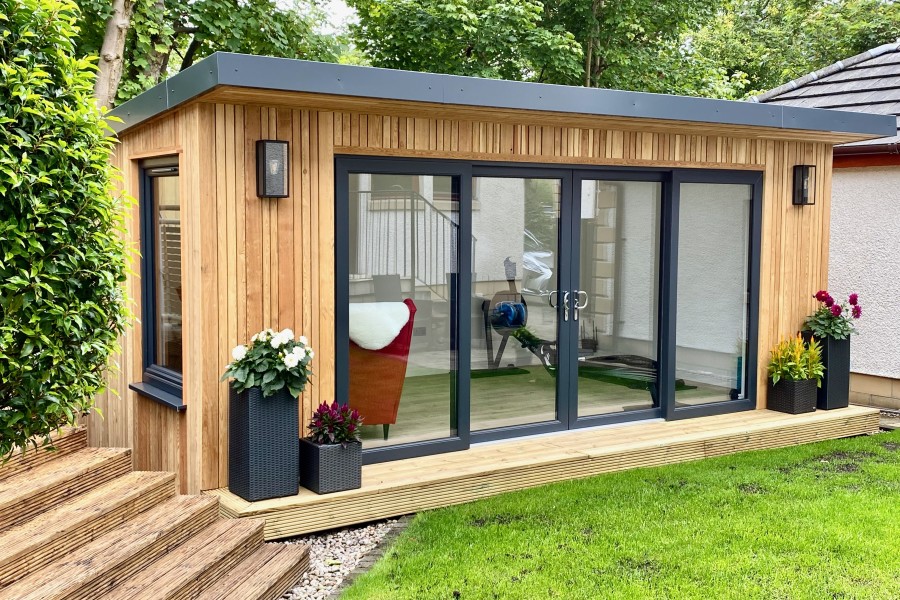If you are considering building garden rooms or conservatories, outhouses extension of the garden office or extensions certain size limitations often determine whether you need planning permission. Here's a summary of typical size-related factors you might have to take into consideration when seeking permission for planning.
The planning permission is required for detached outbuildings in excess of 50 percent of the land area surrounding the original home (excluding the footprint).
Height restrictions:
Single-story structures. The maximum eaves can't exceed 2.5 meters.
Constructions that are within 2 meters of the boundary of the property: The maximum height is 2.5 meters.
Floor Area:
If you don't need approval for planning, but your structure has a surface that is larger than 30 square meters the possibility is that it will be required to obtain approval from the building regulations.
Proximity of boundaries:
If the structure is more than 2.5 meters high and lies within 2 meters of a border, planning permission is required.
Building Utilization:
The size of gardens isn't the only factor, their intended use can influence whether planning permission is needed. If the building's intended use is for residential use or commercial space, then planning permission is more likely to be required.
Permitted Development Rights:
Under Permitted Development Rights (which permit for certain kinds of work that do not require to submit a complete planning application) Specific size limitations and conditions apply. These rights are different depending on the type of property that is located in protected as a conservation area or subject to other restrictions.
Extensions and Conservatories:
The maximum depth for a one-story rear extension typically is 4 meters for detached houses, and 3 metres in semi-detached or terraced homes. Under the Neighbour consultation scheme, these may be increased to 8 meters and 6 meters respectively.
The rear extension of one-story houses must not be more than 4 metres.
Side Extensions
The maximum height for a side extension shouldn't exceed 4 meters.
Volume Restrictions:
In certain areas (such as Conservation Areas and Areas of Outstanding Natural Beauty), a building addition that increases the size of the initial home by more than 10 percent (10%) or fifty cubic meters (whichever the greater number) requires planning approval.
Front Extensions
Extensions that extend beyond the front of the house facing the street will usually need planning permission.
Check with your local authority as rules can differ in accordance with local councils as well as property conditions. In addition, even when planning permission isn't needed, building regulations approval might be required for safety and structural integrity motives. Check out the recommended garden room max height for more info including best electric heater for cabin, what size garden room without planning permission, how to get power to a garden room, garden rooms hertfordshire, do i need planning permission for a garden room with toilet, best heater for log cabin, outhouse garden, outhouses, garden room conservatory, my outhouse and more.

Concerning Listed Buildings What Type Of Planning Permission Are You Required To Obtain For Garden Rooms, Etc?
Building gardenrooms, conservatories and outhouses along with garden offices or extensions within the grounds of listed buildings requires special considerations. More stringent regulations are also in place. These are the main points about planning permissions for these projects. Listed Building Consent
Typically, alterations and extensions or new constructions within the boundaries of a designated building require listed building consent along with planning approval. The listed property's character and uniqueness can be affected by changes.
The impact on the character of historical characters:
An application for planning is required for any structure or extension which could alter the historic character of the property listed or its location. This includes garden structures and outbuildings.
Materials and Design
It is crucial that the materials and design employed in the construction of the new structure is compatible with the architectural and historic significance and value of the original building. Planning permission is required if the design and materials are not traditional.
Distance from the Listed Building
New constructions that are built near the historic building will be inspected for their impact on the setting and appearance of the heritage asset. The character of the building will not be affected by planning permission if it is granted.
Size and Scale
The garden room size the size of the conservatory, extension size must be in line to the building that is listed. Permission for planning and detailed assessments are more likely for larger structures.
The location within the property:
The location of your proposed structure (whether located in front, on the side, or at the rear of the building) will determine whether you require permission to plan. Key locations or areas that have an impact on the building's structure will require a closer look.
Changes within the organization:
Even if the new structure is demolished from the listed building, any changes made to the listed building (such as the construction of new access points) are also subject to the listed building's consent as well as planning approval.
Conservation Areas that Overlap
Additional restrictions will apply for listed buildings situated in the designated conservation area. Planning permits are required to comply with both the listed building and conservation zone rules.
The use of the building:
The intention of using the garden room or outbuilding can influence the need to obtain planning permission. Any uses that require a substantial alteration, such as residential accommodation or commercial use will be subject to more careful inspection.
Structural Effect
If a construction could compromise the structural integrity, it will require permission for planning.
Local Authority Guidelines
Local authorities usually have their own guidelines regarding listed buildings that outline the types of construction and modifications are allowed. Planning permission is needed to ensure that these rules are followed.
Professional Assessments
Conservation experts typically conduct thorough reviews of proposals for the work to be carried out on listed building. These assessments aid in determining the feasibility of proposed changes and support the planning permission application.
Summary The planning permission and listed-building consent is required nearly always when making conservatories, garden rooms or outhouses. This is also true for extensions or garden offices as well as gardens offices that are attached to listed properties. Consult your local planning authority as well as heritage professionals at the beginning of the process of planning to ensure that the building is in compliance with relevant regulations. This can also protect the historic and architectural integrity of the building. View the most popular outbouse for blog examples including outhouse buildings, outhouses, my outhouse, 4m x 4m garden room, small garden office, best electric heater for cabin, garden rooms brookmans park, herts garden rooms, copyright garden room, how to get power to a garden room and more.

What Kind Of Planning Permission Is Needed For Gardens, Room Additions, Etc. In Terms Of Location Restrictions?
The location restrictions are essential when you are planning to construct garden offices, conservatories, or outhouses. Consider these key criteria when determining the location of your home: Distance from boundary
Within 2 meters of your property's boundary, any building must not exceed 2.5 meters. If the building height exceeds that amount, then planning permission will be required.
Front of the Property
The permitted development right does generally not permit extensions or forward-facing buildings.
Side of the Property:
Side extensions must adhere to certain size and height limits. They usually require approval from the planning department if they go further than the existing wall on the side of the house.
Rear of Property
Extensions to the rear and garden rooms situated at the rear of the house are subject to height and size restrictions. The planning permission must be obtained if these extensions are in excess of the permissible growth boundaries.
Designated Areas
In areas of outstanding natural beauty (AONB), National Parks and World Heritage Sites there are stricter regulations. Planning permission is required for any new structure in any size.
Listed Buildings
Listing buildings are subject to strict rules. Planning permission is generally required for any expansion, new construction or extension, no matter the area it is situated on the property.
Green Belt Land:
The creation of green belts is prohibited in order to safeguard open spaces. Permissions are usually required to construct a new structure or significant change.
Flood-prone areas:
If the property is located in a flood-prone area further regulations are required to ensure that the building does not exacerbate flooding risks. It is possible to obtain planning permission or a flood assessment.
Urban vs. Rural Settings
Urban and rural settings are often subject to different rules. Rural areas may be more accommodating to the size and location of outbuildings. However, this may vary.
Highways and Public Rights of Way
The structure could require planning permission in order to prevent obstruction of views, access or safety when it is located near highways, roads or other public rights-of-way.
Shared ownership or leasehold land:
Additional permissions could be required from the managing body or freeholder in the case of leasehold properties or are part of shared-ownership schemes. Permission to plan may still be required depending on local regulations.
The Structures adjacent:
The proposed structure could require planning approval to avoid adverse impacts on the neighboring properties or land.
It is recommended that you consult with your local planning authority to receive specific guidance specific to your specific location and the specifics of your situation. Local laws can impact the rules, and it's crucial to ensure that you comply with all regulations. View the most popular do garden offices need planning permission for site info including garden room conservatory, copyright garden buildings, outhouse garden rooms, garden room heater, small garden office, do i need planning permission for a garden room with toilet, ground screws vs concrete, garden out house, garden buildings , what is a garden room and more.
